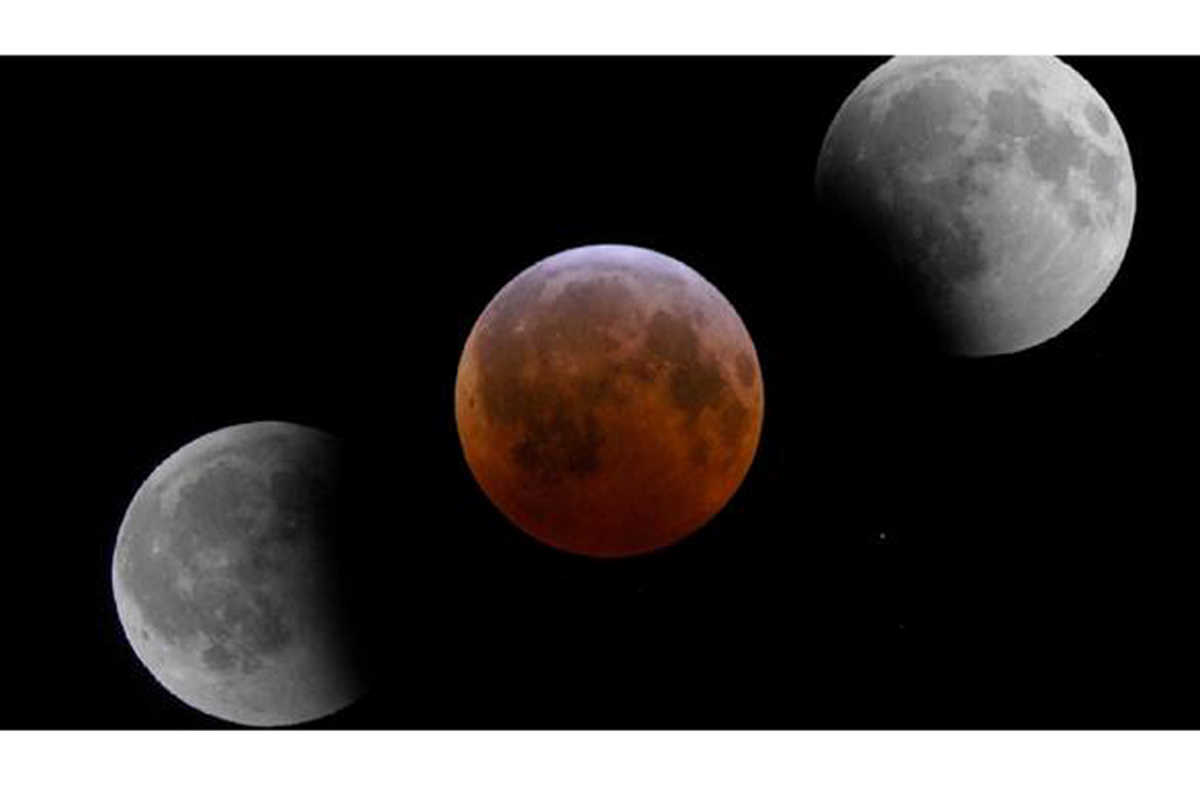How to watch the Easter weekend Blood Moon
Loading...
Sen—Easter weekend 2015 sees the second eclipse of the year on Saturday April 4, with a that will be visible from most of North America and around the Pacific Rim region. And unlike last month’s , which was total only along a narrow swath of the North Atlantic, you only have to be on the right hemisphere of the Earth to witness a total lunar eclipse.
The April 4 lunar eclipse is the third in an ongoing series of four, known as a tetrad. Over the past few years, the term Blood Moon—referring to the color of the Moon as it enters into the inner shadow, or umbra of the Earth—has entered into the internet vernacular. The Moon can actually appear anywhere from a bright orange to a dark brick color, depending on how deep the Moon is immersed in the Earth’s shadow, and how much intervening dust is in the Earth’s atmosphere.
Expect the April 4 eclipse to be a bright one, as the Moon just dips into the umbra of the Earth for a brief four minutes and 43 seconds. This is actually the shortest total lunar eclipse since Oct. 17 1529, and the first total lunar eclipse of the 1,262 years-spanning saros series 132, to which this eclipse belongs.
The next lunar eclipse featuring a span of totality shorter than the April 4 eclipse won’t occur until Sep. 11, 2155.
Observers in Australia and the Asian Far East will see the eclipse at sunset, while western North America enjoys totality at sunrise. Hawaii and the central Pacific islands will catch the eclipse high in the sky near the zenith around local midnight.
Lunar eclipse photography is as easy as shooting the Moon, a skill that you can practise on the waxing gibbous Moon on the evenings leading up to the eclipse. The fact that totality occurs near moonrise for the Far East and Australia, and near moonset for North America also means that photographers will have the opportunity to capture the eclipsed Moon near foreground objects such as buildings, hills and famous landmarks.
You’ll need a lens with a focal length of at least 200mm or greater, otherwise, the Moon will appear as nothing more than a tiny dot. Though the Full Moon appears large in the night sky, this is only an illusion—the Full Moon is about half a degree in apparent size, and you could line up 720 of them around the local horizon!
A DLSR camera with a zoom lens yields pretty good results. Be sure to experiment with the mix of f-stop/ISO/and shutter speeds beforehand to get the settings just right.
Probably the trickiest moment of shooting any eclipse is the onset of totality. At this point, you’ll be taking the shutter speed down from around 1/100th of a second to as slow as 4 seconds to capture the crimson-colored Moon.
Looking to shoot the eclipse with your ? Some pretty amazing images can be made just by holding your iPhone up to your telescope and shooting. This afocal method is known as digiscoping, and it is easier than ever to do thanks to live screen previews afforded by modern devices. The trickiest feat is lining up your phone’s camera to the eyepiece and acquiring a sharp and stable focus. Several commercially available mounts are now on the market that allow you to couple your smartphone directly to your telescope.
Shooting a short video of the Moon can also allow you to process and cleanup an image via a program such as . Many phone cameras also have limited shutter speed control compared to DSLRs, but you can compensate for this by using a variable polarizing filter attached to the telescope eyepiece to adjust for the changing light levels during the eclipse with a simple twist of the lens.
Live on the wrong side of the Earth? Got cloudy skies? The folks at the and will both be bringing the eclipse to viewers live.
And don’t despair… there’s one more lunar eclipse in the ongoing tetrad set for both sides of the Atlantic on Sep. 28 2015.
Related Links:
from Sen. © 2015 Sen TV Limited. All rights reserved. This material may not be published, broadcast, rewritten or redistributed. For more space news visit and follow on Twitter.




